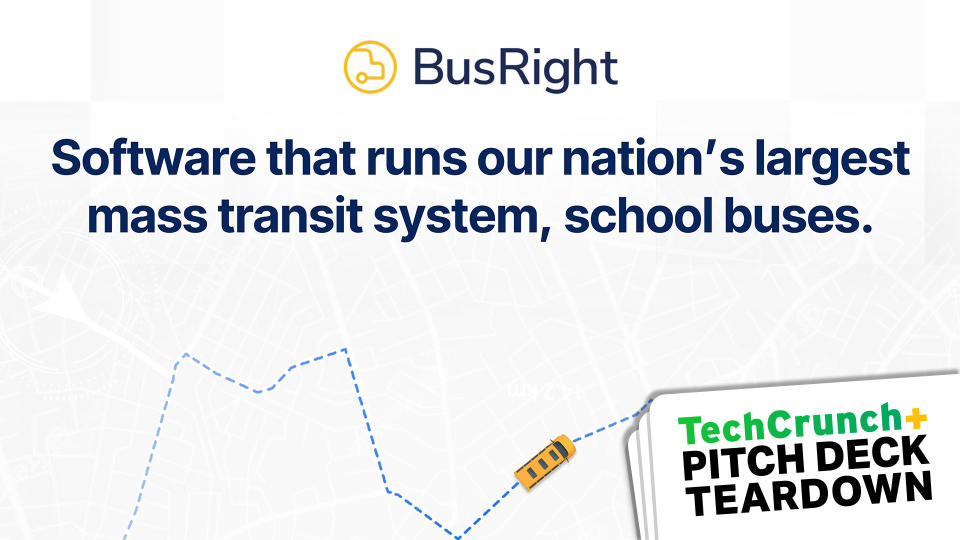TechCrunch+ Roundup: SaaS+ basics, Labor Day book picks, building trust with AI customers
"SaaS+" refers to software companies that augment their core products and services with value-adding features like embedded e-commerce, insurance or payments processing.
Baking these features into the product pipeline creates secondary convenience that delights customers — along with new revenue streams that thrill investors.
Drawing from their experience building a platform for youth athletics, Justin Kaufenberg (managing director at Rally Ventures) and Greg Blasko (co-founder of Monoline) explain how to "build the foundation of your SaaS+ house correctly" with multimerchant cart technology, parent-child data models, and other ideas.
Full TechCrunch+ articles are only available to members.
Use discount code TCPLUSROUNDUP to save 20% off a one- or two-year subscription.
All six recommendations include detailed examples of software architecture choices made inside companies like Kayak, Amazon and Shopify that combine to boost the number of transactions each user makes.
"Being aligned on these concepts will drive product roadmap, core technical architecture, pricing strategy and product marketing," according to the authors.
Thanks very much for reading TC+!
Walter Thompson
Editorial Manager, TechCrunch+
Never express your ‘use of funds’ slide as percentages

Image Credits: Haje Kamps (opens in a new window) / TechCrunch+ (opens in a new window)
Building a pitch deck is like four-dimensional chess: Founders need to give investors a convincing narrative that will carry the company from this fundraising round into the next one.
Some teams like to share slides that explain how they plan to allocate funding, but Haje Jan Kamps says percentage breakdowns are a "red flag" to potential investors.
"How much tech do you need to have developed? How many customers and how much revenue do you need? What staff do you need to develop that tech, sell to those customers, and support them?
In other words: "You’re raising for milestones, not for percentages or runway."
4 ways to show customers they can trust your generative AI enterprise tool

Image Credits: umdash9 (opens in a new window) / Getty Images
In light of our ongoing debate about the existential dangers of AI, it was interesting to sit in a theater last night and watch a three-hour epic about the dawn of the Atomic Age.
Eight decades later, we're once again rushing into a new technological era without first creating a framework for ethics, safety, trust, or a thousand other considerations.
Since there are no industry standards or government agencies guiding AI development, startups need to establish new best practices, according to TC+ contributors Luigi La Corte and Leo Arango.
"Providers that take active steps to reduce the potential for LLM 'randomness' and build the most trust will be outsized winners."
Pitch Deck Teardown: BusRight’s $7M Series A deck

Image Credits: BusRight (opens in a new window)
America's school buses comprise the country's largest public transportation fleet: According to one estimate, students take 10 billion trips each year.
School-bus management platform BusRight recently raised a $7 million Series A with a "well-designed" deck that's "full of careful touches," according to Haje Jan Kamps:
Cover
Go to market
Target audience
Market size
Problem
Solution/product
Traction
Sales process
Business model/unit economics
Testimonials
Sales decision dynamic
Growth projection
Team
Closing/contact
Ask Sophie: What are the visa options for a startup founder with family?

Image Credits: Bryce Durbin/TechCrunch
Dear Sophie,
I’m a startup founder in Berlin. I just returned from a visit to Silicon Valley where I met with a new customer. On the trip I realized I need to be based in the U.S. to grow our base with U.S. customers.
What are the best visa options for my family and me? Will any of them allow my husband to work and continue his career?
— Seeking Scale
Get the TechCrunch+ Roundup newsletter in your inbox!

To receive the TechCrunch+ Roundup as an email each Tuesday and Friday, scroll down to find the “sign up for newsletters” section on this page, select “TechCrunch+ Roundup,” enter your email, and click “subscribe.”
Click here to subscribe
Looking for your next book? These 9 authors have reading recommendations for you

Image Credits: Daniel Grizelj / Getty Images
Anna Heim asked several tech writers: “What book have you read this summer that you think others might enjoy?” Here's who responded:
Adam DuVander
Phil Rosen
Adi Polak
Andrew Lee Miller
David Kadavy
Sarah E. Brown
Zeke Faux
David Spinks
Purna Virji
Making AI trustworthy: Can we overcome black-box hallucinations?

Image Credits: Customdesigner (opens in a new window) / Getty Images
Characters in cartoons might imagine giant hot dogs when they’re hungry, but a large language model (LLM) can hallucinate for a variety of reasons, such as poor data quality or an unclear prompt.
Major AI platforms “infer and extrapolate based on what they believe to be the most likely answer, not actual data,” according to Dr. Mike Capps, CEO and co-founder of Diveplane.
Instance-based learning, on the other hand, compares training data points “against each other to gain insight into the dataset and the predictions,” says Capps. “In other words, IBL ‘shows its work.'”


